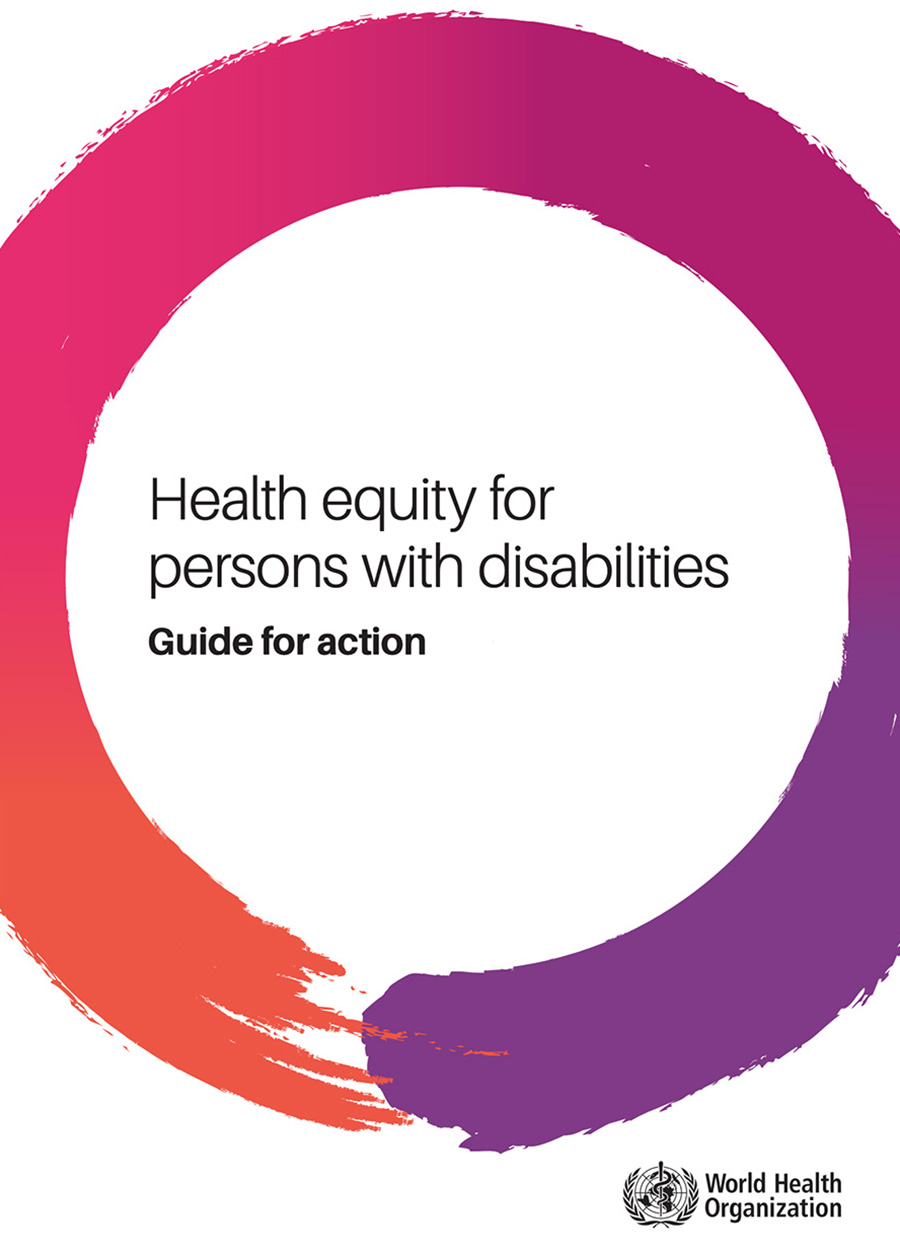The World Health Organization (WHO) has published a new toolkit to guide governments in building health systems that are inclusive of persons with disabilities. Titled Health equity for persons with disabilities: guide for action (or Disability inclusion guide for action), the new resource outlines a process that ministries of health can lead on and complete in as little as 9 months, culminating in the implementation of concrete actions to advance health equity for persons with disabilities.
The Guide is a milestone for WHO and all partners in the health and disability sectors to engage in a strategic process that can benefit millions of people worldwide.
Global overview
The Global report on health equity for persons with disabilities, published in 2022, estimates that 1.3 billion persons (or 1 in 6 people) have a significant disability. It also highlights that many persons with disabilities experience health inequities due to avoidable barriers such as stigma, discrimination, the lack of inclusive health policies, inaccessible transport to reach health services, or obstacles in communicating with health professionals. To address these inequities, the global report listed 40 actions that countries can take to advance health equity for persons with disabilities. The Disability inclusion guide for action was subsequently developed to respond to the unique needs and priorities of each country, based on their own contexts. The toolkit is unique in that it is designed to guide the process of identifying key opportunities to promote disability inclusion within existing plans and frameworks. This will enable ministries of health to integrate the most effective actions into their national health plans and operational plans.
The Disability inclusion guide for action provides countries with a practical roadmap to make their health systems more inclusive for persons with disabilities. This will equip leaders in the health sector to systematically assess the most relevant opportunities to shape their current plans.
“The Disability inclusion guide for action provides countries with a practical roadmap to make their health systems more inclusive for persons with disabilities. This will equip leaders in the health sector to systematically assess the most relevant opportunities to shape their current plans,” said Darryl Barrett, technical lead of the WHO Disability programme.
He added that, “Using this toolkit as an adjunct to national health plans will contribute to strengthening health systems overall, which would address the need for better access to quality healthcare for all.”
Key actors
While the Disability inclusion guide for action process should be led by ministries of health, it also requires the engagement of a wide range of relevant stakeholders for the most impact, such as other government departments, health service providers, research institutes and civil society, including persons with disabilities and their representative organizations.
Anne-Cécile Konan, president of the National Union of Women with Disabilities in Côte d’Ivoire, was involved in the implementation of the toolkit in her country. She explains that, “Giving us access to healthcare means giving us our dignity. It means giving us our wellbeing. It allows us to express our humanity. The Disability inclusion guide for action gives us tools to put disability at the heart of the activities that our ministry of health is going to carry out. I think this toolkit will really help persons with disabilities, their families, but also our entire community.”
Persons with disabilities die up to 20 years earlier and have poorer health, due to unjust and avoidable factors. The health sector is not addressing these health inequities and persons with disabilities are left behind. The good news is that we know what to do. Targeted disability inclusive actions, as part of our primary health care efforts, and as a part of every country’s journey towards universal health coverage is what is needed. Advancing disability inclusion in the health sector is not a choice anymore
Advancing disability inclusion is an essential step for all countries to achieve their goals towards Universal Health Coverage and the 2030 Sustainable Development Agenda. In October 2024, the World Health Summit hosted its first-ever session dedicated entirely to health equity for persons with disabilities, highlighting the importance of this issue by global health partners. Professor Jérôme Salomon, WHO’s Assistant-Director General for Universal Health Coverage, Communicable and Noncommunicable Diseases emphasized that, “Persons with disabilities die up to 20 years earlier and have poorer health, due to unjust and avoidable factors. The health sector is not addressing these health inequities and persons with disabilities are left behind. The good news is that we know what to do. Targeted disability inclusive actions, as part of our primary health care efforts, and as a part of every country’s journey towards universal health coverage is what is needed. Advancing disability inclusion in the health sector is not a choice anymore.”
The Disability inclusion guide for action has so far been implemented in Côte d’Ivoire, Malaysia, Montenegro and the United Republic of Tanzania, and many more countries are at various stages on their journey towards more inclusive and sustainable health systems, using this guide.

